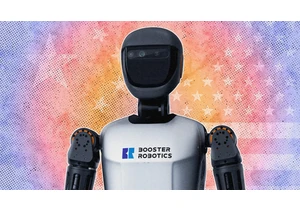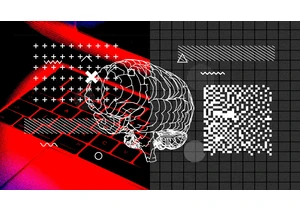Having served in executive roles at LEGO and Apple, and now running my own startup at Uplift Labs, I’ve been put in a few tight situations with some pretty high stakes involved. But I’m not sure anything compares to one challenge I had to meet as the President of Tesla Japan: the 2014 launch of the Model S for Japan. I had led other launches in the past, and I estimated that I’d have about five months to put it together. But at Tesla things move fast, and Elon Musk came to me and said, “Get it done in five weeks.” (I now jokingly refer to this five-week period as “Ludicrous Mode.”) We pulled it off, though, and I learned plenty along the way–including these five business lessons I’d like to pass along here. Creativity is important in business Business decision making demands imagination. The logistics of the Model S launch, for instance, required no small amount of creativity. We had three separate staging areas at the Roppongi Hills complex in Tokyo, multiple stakeholders (Tesla staff, customers, media, key partners), and a small window to put on an unforgettable launch. Coordinating Elon’s schedule, managing media and partner needs, and handling delivery to our first Model S customers was a needle to thread. And there was more: Because our Model S stock was limited, we asked all owners expecting delivery if we could borrow their cars to showcase during the event–and offered a special launch party invite as an incentive. We also needed to demo Tesla’s Supercharger infrastructure, so we worked with the hotel to build one directly into the launch venue. Our three staging areas (media interviews and launch event, Supercharger station, launch party) were on the same grounds, but separated vertically, creating a logistical challenge for the elevators to ferry all the right folks in 10-minute windows between events. But by finding a way to make it all happen, we were able to put on an event worthy of Tesla’s high-profile entry into Japan. Create a holistic customer experience In a service business, and especially for an event like this launch, every customer touchpoint should be a delightful experience. That’s the vision we rallied around at Tesla, and it’s something I still believe in strongly, no matter the product. The Model S is a fantastic vehicle, but the car and the launch were also products of a lot of hard work to create a memorable experience for our soon-to-be owners. All our teams worked crazy hours ahead of the Tokyo event, including our service department, which hustled to clean, polish, and ensure every vehicle was free of a single fingerprint or smudge. For the launch event, all our efforts prioritized the customer journey–invitation cards, arrival greeting, a special venue experience and, finally, handing over the keys to our new owners. We also conceived and introduced our “park and charge” concept, allowing a Tesla owner to have their vehicle valeted to the Supercharger and returned fully charged. That’s white-glove service. Maintain a laser focus on your outcome In Tokyo, we were a long way from our Tesla headquarters in California. And with only five weeks to get ready for the Model S launch, we knew we wouldn’t have all the usual assets available for a typical launch. What brought it all together was what I call a minimum-viable launch: locking in on all the absolutely critical requirements and ensuring they’re met at the launch date. Given our timeline, we decided to narrow our focus to a few key objectives: messaging Tesla’s mission to our key stakeholders, completing delivery to those customers who placed early orders, engaging our newest customers in a way that made them feel they were part of a much larger movement, showcasing the Model S and Supercharger to the media, and signaling to our existing and potential partners that collaborating with Tesla was the right decision. Trimming our objectives to a short list of must-haves helped sharpen the blueprint of our minimum-viable launch. Sometimes less really is more Part of that minimum-viable launch approach meant cutting down the number of moving parts associated with the launch. We originally invited all owners to the launch event atop the Roppongi Hills Tokyo City View, featuring a breathtaking panoramic view of the city. But due to logistics, we made the tough decision to invite only the first 10 owners, in keeping with Tesla’s delivery ceremony. In this case, fewer moving parts streamlined our plans and made the launch ceremony feel even more special when the first owners were handed the keys to their Model S. That approach has also served us well at Uplift Labs, where we’ve been able to create a highly accurate athletic performance tracking system using only smartphones–no body suits, sensors, or wearables. Later, we were even able to reduce the number of cameras needed from three to two (a fraction of the hardware needed to run other systems). The result: less investment on the part of the customer, quicker and easier set-up, and a better overall user experience in a product now trusted by multiple professional sports organizations. First-principle ruling prevails My big takeaway from the Model S launch was the importance of clarity in problem solving–the value in distilling things to their basic elements. This sort of thinking helps clear clutter from a project, allowing for energy to be focused on pushing traditional boundaries and refuting conservative thinking. Some of this can be achieved by recruiting good people or partners and stepping aside as they do their jobs. I’ve been fortunate to work with a lot of great employees, venues, companies, distributors, and others, both in my previous work and at Uplift Labs. The more trusted partners you’re able to get help with the heavy lifting, the less often you’ll find yourself forced to shift to Ludicrous Mode. Masa Kabayama, is CEO and co-founder of Uplift Labs. Previously, he served as president of Tesla Motors Japan.
Login to add comment
Other posts in this group


I’ve worked at the bleeding edge of robotics innovation in the United States for almost my entire professional life. Never before have I seen another country advance so quickly.
In


Restaurant industry leaders are excited for

Elon Musk’s anger over the One Big Beautiful Bill Act was evident this week a

Welcome to AI Decoded, Fast Company’s weekly new

When artificial intelligence first gained traction in the early 2010s,
